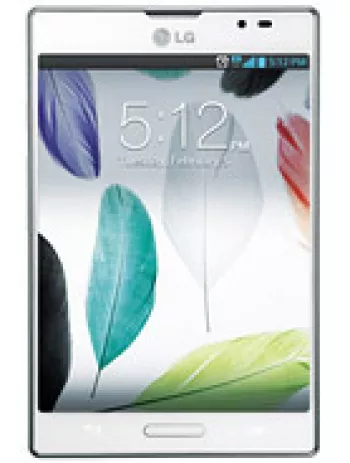
Overview of LG Motion 4G MS770
The LG Motion 4G MS770 is a mid-range smartphone that was released in August 2012, targeting budget-conscious consumers. Though it has been discontinued, its features and specifications still offer valuable insight into smartphone design from the early 2010s. This device was one of the early adaptors of 4G LTE technology, which significantly impacted mobile connectivity speeds at the time of its release.
Design and Build
With dimensions of 111 x 61 x 11.7 mm and weighing 132 grams, the LG Motion 4G MS770 was compact and relatively lightweight, making it easily portable. Its design included a Micro-SIM slot, which was typical for the smartphones of that era. The body was robust, providing a comfortable grip, and it was available in black. Despite its modest physical look, the build quality of the LG Motion was reliable, designed to endure daily use.
Display
The device featured a 3.5-inch TFT display with a resolution of 320 x 480 pixels, resulting in a pixel density of approximately 165 ppi. The screen's TFT technology was common at the time, although it didn't offer the vivid colors and deep contrasts of AMOLED displays. Protection was provided by Corning Gorilla Glass, which helped in safeguarding against scratches and minor impact.
Camera Capabilities
For its time, the LG Motion 4G's 5 MP rear camera was quite capable, offering autofocus and an LED flash. It supported HDR features and could capture video at 1080p resolution at 30 frames per second. The front-facing VGA camera supported basic video calling activities, although it lacked the quality expected in modern devices.
Performance and Hardware
The smartphone was powered by a Qualcomm MSM8960L Snapdragon S4 Plus chipset, integrating a dual-core 1.2 GHz Krait CPU and an Adreno 225 GPU. Such hardware provided a decent balance of performance and power efficiency for daily tasks. Complementing the processor, the smartphone came with 1GB of RAM and 8GB of internal storage, of which about 5GB was user-accessible. The storage could be expanded via a dedicated microSDHC slot, which was a crucial feature for users seeking additional storage space.
Software
Operating on Android 4.0 Ice Cream Sandwich, the LG Motion 4G offered users access to a wide array of applications available on the Google Play Store at that time. The software was relatively intuitive, providing features like multi-tasking, improved notifications, and better integration with Google services.
Connectivity Options
The LG Motion 4G supported a range of connectivity options, adhering to CDMA, EVDO, and LTE standards. Its introduction of 4G LTE was significant, providing users with faster Internet speeds and improving the overall browsing and web-based performance of the device. Additional connectivity features included Wi-Fi 802.11 b/g/n with hotspot functionality, Bluetooth 4.0, GPS with A-GPS support, a microUSB 2.0 port, and a 3.5mm audio jack. However, it lacked a radio feature, which was common in budget-friendly phones at that time.
Battery Life
Equipped with a removable Lithium-Ion 1700 mAh battery, the LG Motion 4G offered a satisfactory battery life for moderate usage. Standby time reached up to 290 hours, while talk time extended to approximately 5 hours and 25 minutes. The battery's removability was particularly advantageous for users preferring to carry a spare battery for extended use without charging facilities.
Additional Features
Incorporating sensors such as accelerometer, proximity, and compass, the device provided a respectable level of functionality for its time. These sensors facilitated various applications, including navigation and enhanced user interaction with the device. The SAR values stood at 1.03 W/kg for the head and 1.24 W/kg for the body, which were within the safety limits defined by most global standards.
Pricing and Availability
At its launch, the LG Motion 4G was priced around 110 EUR, making it an affordable option for those seeking a smartphone with 4G capability without breaking the bank. Despite being discontinued, it serves as an example of how cost-effective technology can provide essential smartphone experiences without high expense.
Conclusion
The LG Motion 4G MS770, released in 2012, showcased an amalgamation of practical design, solid performance, and essential features. Although it has been succeeded by more advanced technology and design trends, its integration of 4G LTE remains notable. It's a testament to the evolution of smartphones, reflecting both the advancements of its time and the foundational technologies that have paved the way for current devices.
Key Features of LG Motion 4G MS770
- 4G LTE Technology for fast internet access
- Protected by Corning Gorilla Glass for added screen durability
- Powered by Qualcomm MSM8960L Snapdragon S4 Plus chipset
- Dual-core 1.2 GHz Krait processor for efficient performance
- 5 MP main camera with autofocus, LED flash, and HDR support
- Capability to record videos at 1080p@30fps
- Ample storage with 8GB internal memory and expandable via microSDHC
- 1GB RAM for smooth multitasking
- Equipped with essential sensors: Accelerometer, proximity, and compass
- Supports Wi-Fi with DLNA and hotspot capabilities
- Built-in GPS with A-GPS for precise navigation
- Removable Li-Ion 1700 mAh battery for up to 5 hours 25 minutes talk time
- Compact and lightweight with a weight of 132 g
Drawbacks of LG Motion 4G MS770
- Discontinued model with no official support or updates available.
- Low screen resolution at 320 x 480 pixels resulting in a pixel density of ~165 ppi.
- Limited display size of 3.5 inches, which may not be ideal for media consumption.
- Older Android version (4.0 Ice Cream Sandwich) with no official upgrade path.
- Limited selfie camera capability with only a VGA resolution.
- No radio functionality, which might be a drawback for users who rely on FM radio.
- Minimal internal storage with 8GB and only 5GB user available, requiring reliance on microSDHC for expansion.
- Relatively short battery life with only up to 5 hours and 25 minutes of talk time.

View Also
More Phones
All Rights Reserved +14266 Phones © Mobilawy 2025

























